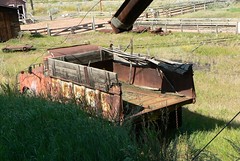
Coal power has a reputation for emitting many pollutants.
1. Washing Coal
Washing coal removes one form of sulfur (pyrite). Washing the coal also removes many of the minerals that would become ash. Typically, the coal is washed very near the coal mine before being shipped. 2. Flue Gas Desulfurization/Scrubbers
2. Low Temperature NOx Burners
3. Electrostatic Precipitator
Circulating Fluidized Bed Combustion can capture 95% of the sulfur in the coal.
In Gasification, coal molecules are broken apart then recombined to our liking. Gasification in coal power plants is environmentally friendly, reducing up to 99% of all pollutants. Gasification can also improve coal power plant efficiency from 40% to 70%.
Three Things You Should Know Concerning Coal
- Mining coal
- Washing coal
- Burning coal
China's Coal Pricing Mechanism Needs Improvement
China's coal consumption peak season typically starts before the Chinese New Year. Coal is the most important energy source in China, accounting for 70% of the national energy consumption. Why would the coal price keep going up in recent years?
The coal price trend in China is closely related to its price forming mechanism. In the era of planned economy, coal prices were uniformly set by the government. In 1993, China started to relax sale prices for coal products other than thermal coal, which accounted for 50% of total coal consumption in China, so thermal coal price was still under a dual pricing mechanism of "planned coal" and "market coal". In late 2004, the government announced the "Coal-Electricity Price Linking Mechanism", which allows periodic electricity price increases once thermal coal price increases 5% or more in the past 6 months, and the thermal coal price in turn can be determined by negotiation between coal sellers and buyers in the market.
On one hand, the demand for coal had been increasing significantly. On the other hand, the government were mandating the closure of small and medium coal mines and limiting the capacity expansion of coal mines, thus reducing coal supply growth. And the railway transportation in China has long been a bottleneck for coal. Coal prices in China started to decline in 1997 and reached a bottom in 2001. The problem of coal shortage started to surface in 2004. Although there may be tightness in certain regions and coal products, China's coal market as a whole is expected to reach equilibrium this year, with coal prices maintaining at a high level.
Not only coal prices in China reflects demand and supply interaction, they are also starting to reflect the associated resources scarcity and environmental costs. Therefore, the crystallisation of regulatory costs is another important reason for the ever-rising coal prices in China.
Previously, most coal mining rights in China could be acquired with little compensation, and costs of safety, environment and rehabilitation had not been included in the normal costing of coal. The risen costs will no doubt put pressure on coal companies.
The increase in production costs is not the sole reason for the rising coal prices. China has a complex coal distribution chain, which had become even more expensive recently, so these non-coal costs are also responsible for the rising coal prices in China. The "coal-power tension" between coal producers, power generation plants and power distribution networks, which are all acting in their self-interests within the value chain, has long attracted the public attention. While the coal prices continued going up in January this year, the government didn't accordingly increase electricity prices as per the "Coal-Electricity Price Linking Mechanism", due to macro control considerations (on inflation). In this circumstance, the thermal coal price became a tenacious point between coal producers and power producers.